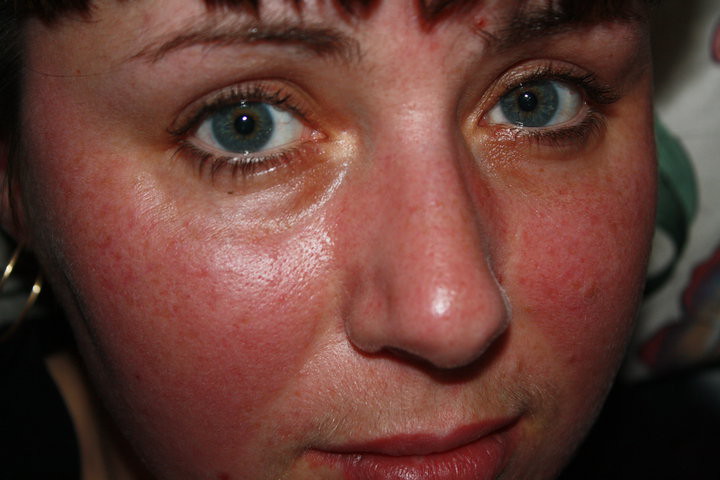If you’re experiencing red skin after extractions, you are not alone. In this guide, you will find step-by-step instructions on how to manage this condition effectively.

Table of Contents
Treating Red Skin After Extractions
If redness does occur, there are several steps that can be taken to alleviate it:
Cool the Skin
Applying a cold compress or clean cloth soaked in cold water to the affected area helps constrict the blood vessels, reducing redness and providing relief from any discomfort.
Use Soothing Creams
Products containing calming ingredients such as aloe vera, chamomile, or calendula can soothe irritated skin. They should be free from alcohol and other irritants that could exacerbate redness.
Avoid Sun Exposure
The skin is more sensitive after an extraction, and sun exposure can cause further redness and irritation. Using sunscreen with an SPF of 30 or higher and wearing a hat can provide protection.
You can use this EltaMD UV Clear Face Sunscreen with SPF 46 from Amazon. It’s designed to protect and calm sensitive skin.
Consult a Professional if Needed
If the redness persists for an unusually long time or becomes worse, it is essential to consult with a healthcare provider. They can assess the situation and provide medical treatment if needed, such as prescription creams or antibiotics for potential infections.
If you have any specific concerns about red skin after extractions, it is always advisable to consult a medical professional. This guide provides general information but is not a substitute for professional medical advice.
We recommend you read this article: Skin After Extractions [Care/Problems & Remedies] to find out how to deal with other skin issues that might occur after extraction.
Understanding the Causes of Red Skin After Extractions
Redness following skin extractions is a typical response that has several underlying causes:
Physical Irritation: During extractions, tools, and pressure are applied to the skin, leading to temporary irritation and redness. The skin may appear inflamed as it responds to this manipulation. This is a normal reaction but can be minimized by gentle techniques. (Source)
Allergic Reaction: Some individuals may have allergic reactions to the products used in the procedure. This can manifest as redness, swelling, or itchiness. To avoid this, professionals should carry out a patch test before the procedure to check for any adverse reactions. You can find out more about patch testing from The American Academy of Dermatology.
Incorrect Aftercare: Following the extraction, the skin may be more sensitive and prone to redness if the aftercare instructions are not properly adhered to. This includes avoiding harsh skincare products and following the specific guidelines provided by the professional who performed the extraction.
Check out these other related articles…
How to Get Rid of Redness After Extractions: Your Easy Guide
How to Calm Skin After Extractions: Your Complete Guide
How to Treat Skin After Extractions: 8 Expert Tips
How to Care for Your Skin After Extractions in 4 Easy Steps
Inflamed Skin After Extractions: Comprehensive Guide
How to Prevent Skin Red After Blackhead Extraction
Preventing red skin after blackhead extraction is possible by taking some deliberate precautions:
Choose a Skilled Professional: Selecting an experienced and licensed aesthetician or dermatologist ensures that they are trained in performing extractions with minimal irritation. They will be knowledgeable about the correct tools and techniques to use for your specific skin type.
Use Hypoallergenic Products: Ask the professional to use products that are formulated for sensitive skin or that are hypoallergenic. This minimizes the risk of allergic reactions and reduces the chance of redness.
Follow Aftercare Instructions: After the procedure, the professional should provide detailed aftercare instructions. This may include guidelines on cleansing, moisturizing, and protecting the skin. Following these recommendations ensures that the skin heals properly and minimizes the risk of prolonged redness.


